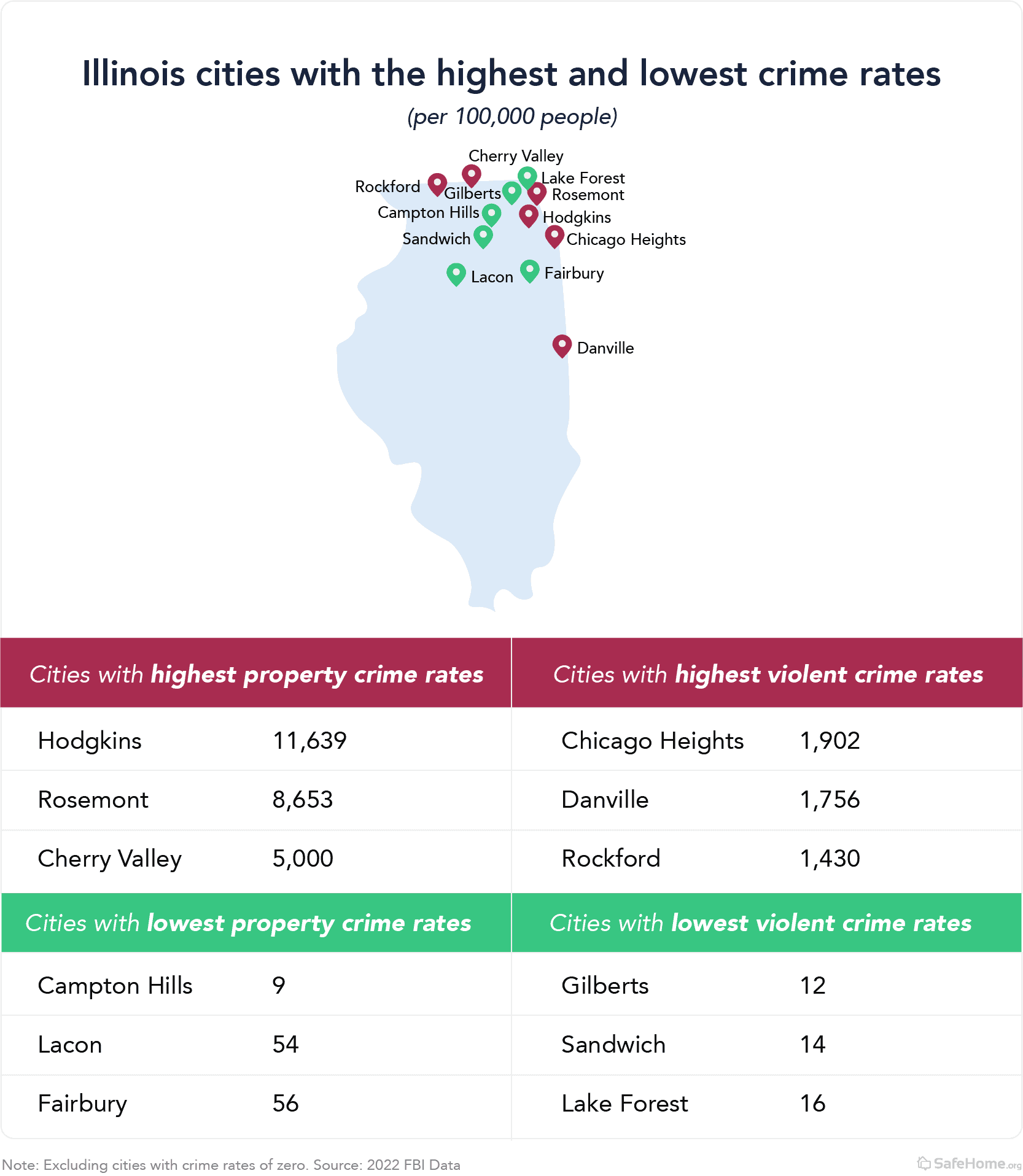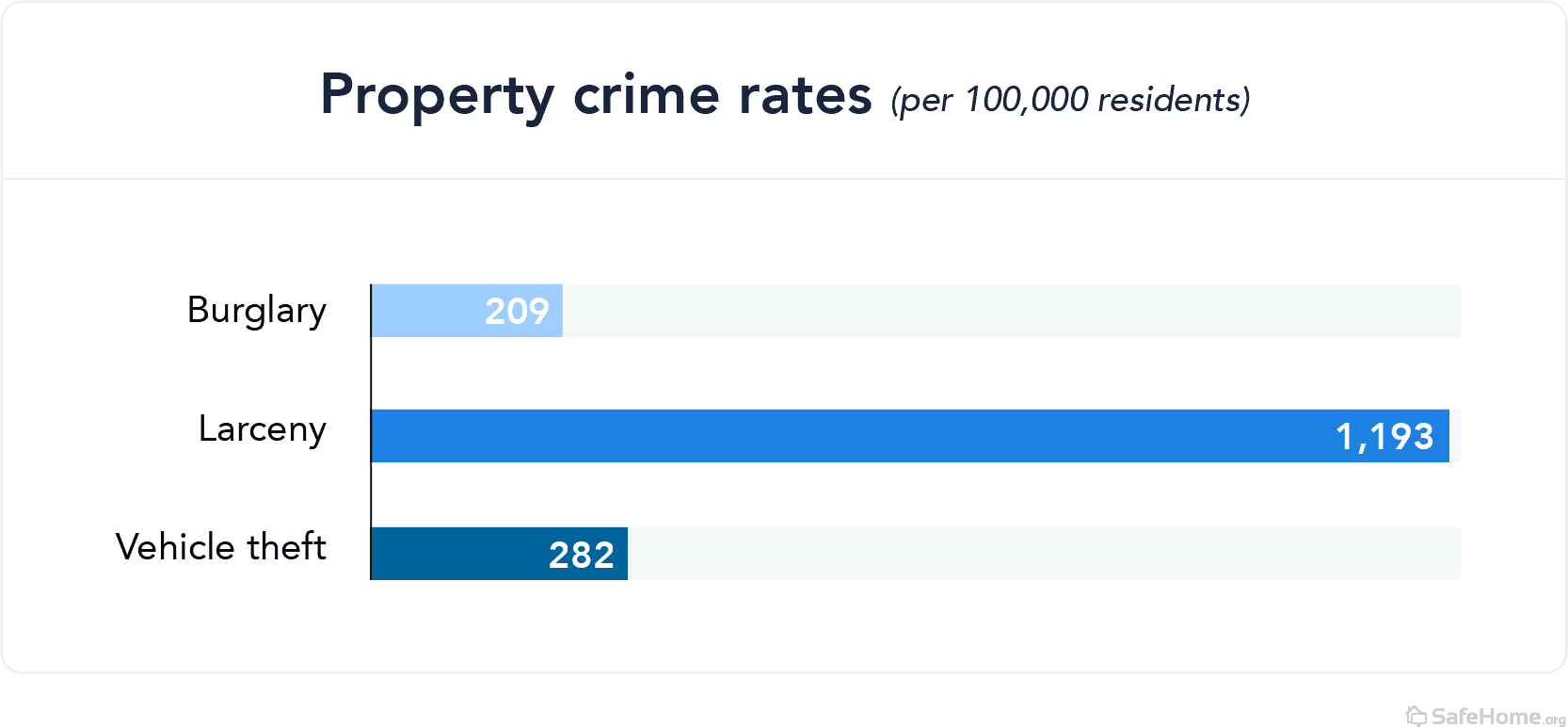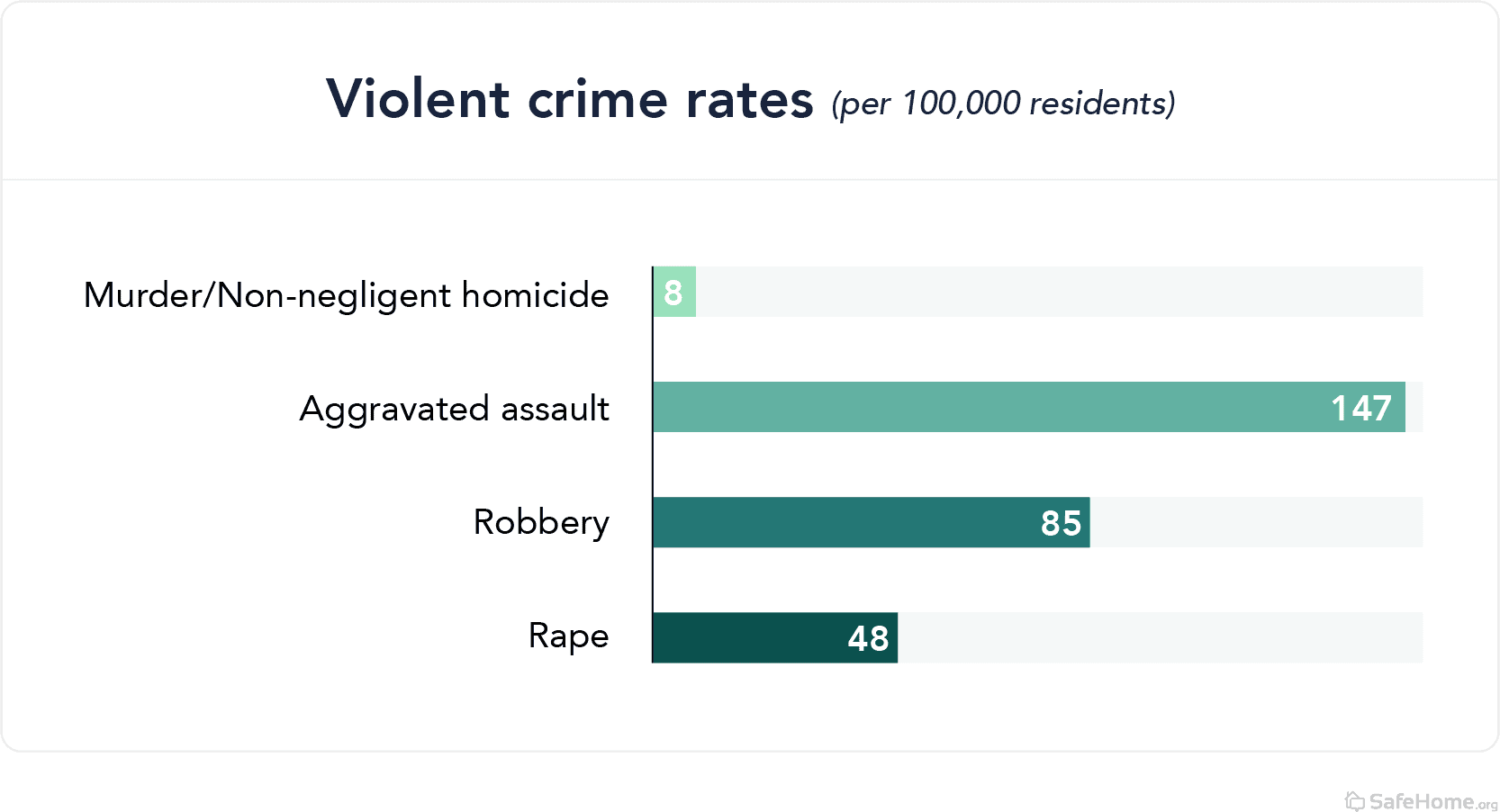The Safest and Most Dangerous Cities in Illinois

While crime rates in Chicago, Illinois, frequently make national headlines, it’s not only big cities that can have high crime rates. Even tiny towns and once-bustling suburbs can have eye-popping crime statistics. Such is the case in the Cook County village of Hodgkins. The community has the state’s highest property crime rate—it’s also the 15th-highest among the 7,000-ish communities across America with available data.
But Hodgkins’ place at the top of the list below doesn’t necessarily mean it’s a dangerous place; rather, it’s likely a combination of a small permanent population (only about 1,500 people live there) and major commercial development.
If you’ve ever had a UPS package make its way through the Midwest, you’re probably familiar with Hodgkins, as the town is home to CACH, a busy UPS sorting facility that covers nearly 50 square acres and employs about 9,000 people. The resulting bump in commercial traffic from workers and surrounding businesses, combined with a tiny resident population, are some potential factors behind Hodgkins’ high crime rates.
On the safer end of the spectrum lies Gilberts, Illinois, a village of around 8,300 people in the suburbs of Chicago. Its property crime rates were the lowest in the state. The town is about 15 miles away from Campton Hills, which had the lowest property crime rates in Illinois. The town’s website describes Campton Hills as a “semi-rural” area, so its low population density may contribute to its low crime rates.
It’s important to note that Chicago proper didn’t have the highest crime rates in the state of Illinois, but Chicago Heights, a southern suburb, topped the list when it came to violent crime. In fact, the violent crime rate in the once-vibrant community is nearly four times higher than Chicago proper. Since reaching its peak in 1970, Chicago Heights’ population has declined steadily every year due to disappearing job opportunities, government corruption, and economic downturn. These factors are likely contributing to the high rate of violent crime.
Statewide Crime Trends in Illinois
For both property crime and violent crime, Illinois ranks below the overall U.S. rate, though it’s important to note when comparing it to other states, data reported to the FBI is incomplete. The agency says available data covers only 79 percent of the state’s population, which could create an inaccurate picture when comparing the state to others.
Still, given its large size, it’s noteworthy that Illinois doesn’t find itself in the top for either violent crime or property crime. And it also compares favorably to other states in the Midwest, though the incomplete-data caveat still applies.
Property Crime in Illinois
When determining property crime rates in Illinois, we looked at larceny-theft, burglary, and motor vehicle theft incidents.
- The overall total property crime rate per 100,000 people in Illinois is 1,683, which is about 14 percent lower than the overall U.S. rate of 1,954 per 100,000, which puts the state in 32nd among all 50 states.
- Larceny continues to be the most common property crime in Illinois, as it is everywhere else in the country, with about 1,193 incidents per 100,000 people:
Violent Crime in Illinois
Violent crimes, including murder/non-negligent manslaughter, aggravated assault, rape, and robbery, are much less common than property crimes, both in Illinois and beyond.
- The state’s overall violent crime rate is 287 per 100,000, which is 25 percent lower than the U.S. rate of 381 per 100,000.
- Illinois ranks 30th among the states for its overall crime rate, though notably, Illinois has the seventh-highest rate of robbery among all states (and first in the Midwest) and ranks second in the region for its murder rate.
- Aggravated assault is the most common type of violent crime in Illinois, occurring at a rate of about 147 per 100,000.
Our data
Our data comes from comprehensive reporting compiled by the FBI and accessed via the Crime Data Explorer website. Property and violent crime state figures were drawn from Table 5 of the 2022 Crime in the U.S. Report. Metropolitan figures were found in Table 6, Crime in the U.S. by Metropolitan Statistical Area. City-level figures were drawn from Table 8, Offenses Known to Law Enforcement by State by City. The population figures in that table are U.S. Census Bureau provisional estimates as of July 1, 2020.
Limitations: Limited data were available in 2022 for Illinois. According to the FBI, the data in the publication tables may differ from those released on the Explorer Pages of the CDE. These variations are due to the difference in methodologies between the publication tables and data displayed on the CDE. Please note that crime statistics are not the sole measure of a city’s safety. Limited data for 2022 were available for Florida, Illinois, Maryland, and Pennsylvania.
Navigate Crime Data by State
- Alabama
- Alaska
- Arizona
- Arkansas
- California
- Colorado
- Connecticut
- Delaware
- Florida
- Georgia
- Hawaii
- Idaho
- Indiana
- Iowa
- Kansas
- Kentucky
- Louisiana
- Maine
- Maryland
- Massachusetts
- Michigan
- Minnesota
- Mississippi
- Missouri
- Montana
- Nebraska
- Nevada
- New Hampshire
- New Jersey
- New Mexico
- New York
- North Carolina
- North Dakota
- Ohio
- Oklahoma
- Oregon
- Pennsylvania
- Rhode Island
- South Carolina
- South Dakota
- Tennessee
- Texas
- Utah
- Vermont
- Virginia
- Washington
- West Virginia
- Wisconsin
- Wyoming



